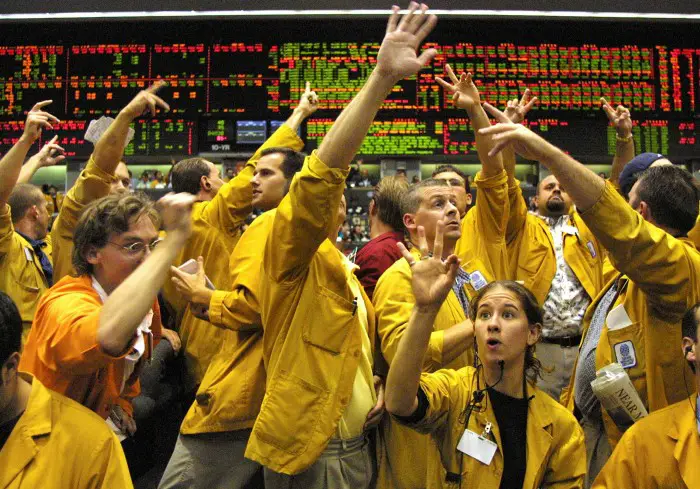The trading pit was in its heyday the most important place where market participants would come together and trade. However, the market has been irreversibly affected since the introduction of electronic trading systems. Pit trading was once the place to be and soon began its demise. Trading is now mostly conducted through digital systems. Despite that the trading pit still exists, although it is not as relevant in today's market as it once was.
What is a trading pit?
The trading pit refers to a physical venue intended for securities trading. Brokers use the open outcry system to purchase and sell various securities in the pit, also known as the trading floor. The trading floor is separated into pits, where brokers and floor traders meet personally to trade. Every single one of those individuals is a member or is connected with a member of a certain exchange. They pay a fee to be able to conduct business on the trading pit.
People who wish to trade futures but weren't members of the relevant commodities exchange have to contact a broker. Only the broker would be able to execute their order on their behalf. Orders are exhibited for all to see, enabling everyone to negotiate for the best price. Brokers may trade their clients' orders as well as their private transactions. The trading pit has its own atmosphere and floor traders in different colorful jackets yelling to get their orders filled. Other methods were employed, and the trading pit relied heavily on hand signals and gestures.
Nevertheless, with the technological revolution of the late 90s, most of the trading moved to an electronic platform. This allowed for a surge of discount brokers that would fill orders and charge fewer fees. Most of the physical trading floors have been substituted by electronic trading platforms. However, there are trading floors that still operate such as the New York Stock Exchange (NYSE).
Comparing with online trading
The trading pit was the center of the market. The place where buyers and sellers would fill their orders. The bid-ask spread that is now defined in a completely electronic way, was then established by shouting prices across the trading pit. Only a few locations today have active trading pits. Due to the fact that computerized trading is far less expensive to operate, which reduces the fees across the board. Without middlemen chagrin commissions, investors are able to save money on each of their trades. Traders are also able to be more profitable due to the reduction in commission costs.
Electronic trading systems, which were originally introduced in the 1980s, are currently used by the majority of stock exchanges. Exchanges such as the NYSE and the CME Group retained their trading floors. But in 1984, after adopting a new phone-based system, they began eliminating brokers on the floor. With the advent of internet technology in the 1990s, more automated systems started to rush in.
During this time, more powerful computers, bigger trade volumes, and lower trading commissions were all seen. The growth of algorithmic trading, high-frequency trading, and quicker technologies marked the decade of the 2000s. Brokers and companies will be able to profit from a larger volume of deals during the trading day as a result of this technological advancement.
Image source: FT

